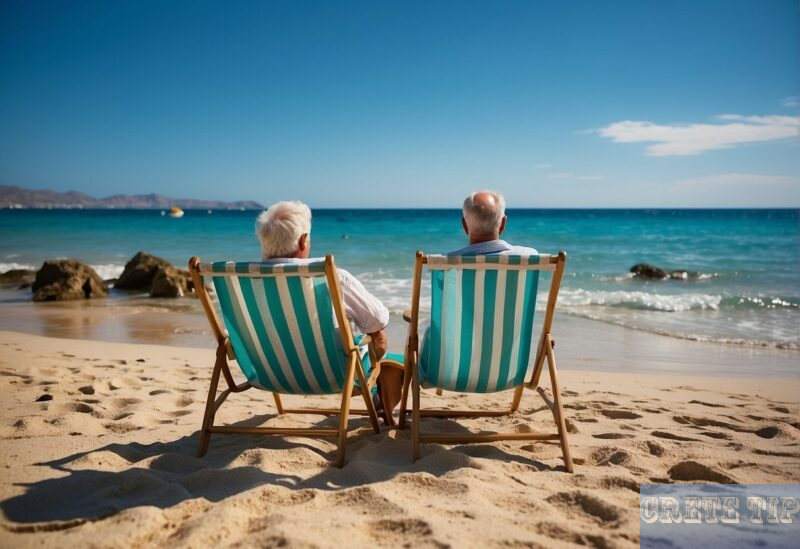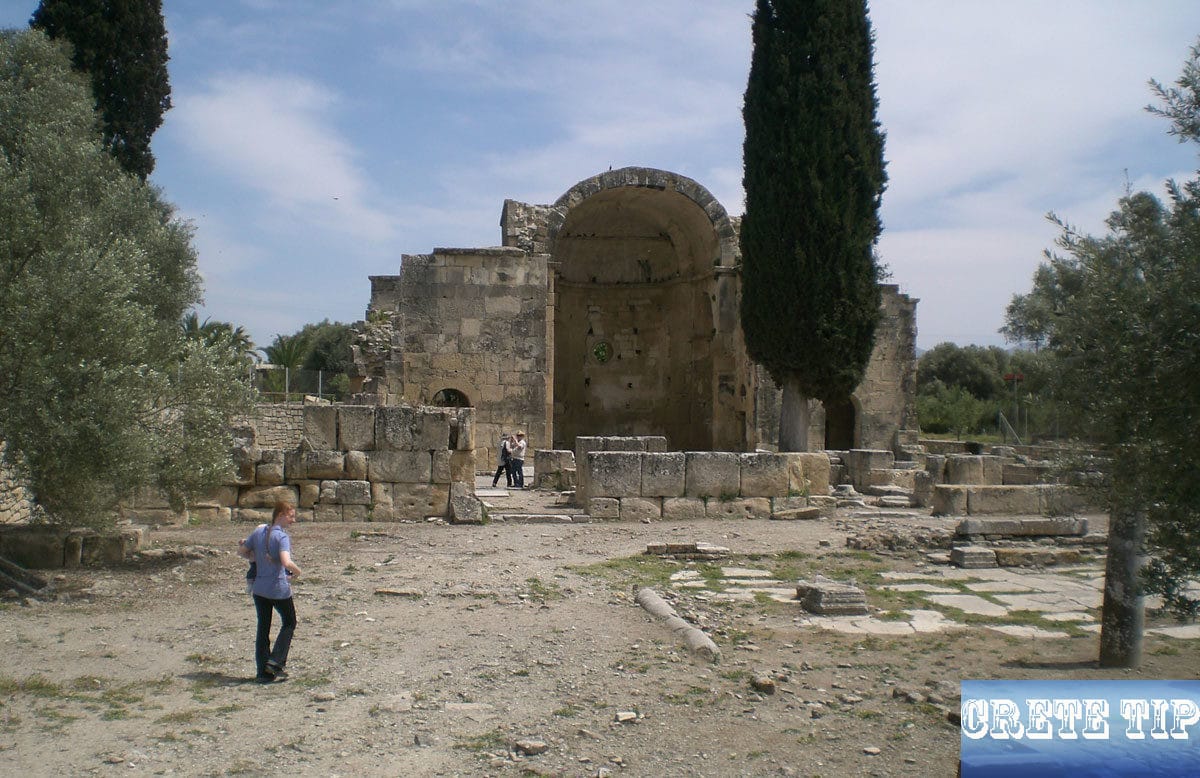Heraklion (or Iraklion), the capital of Crete. Sights in the old town, Square of the Lions, Titus church, harbour with fortress Koules, the huge city wall, churches, museums and hotels.
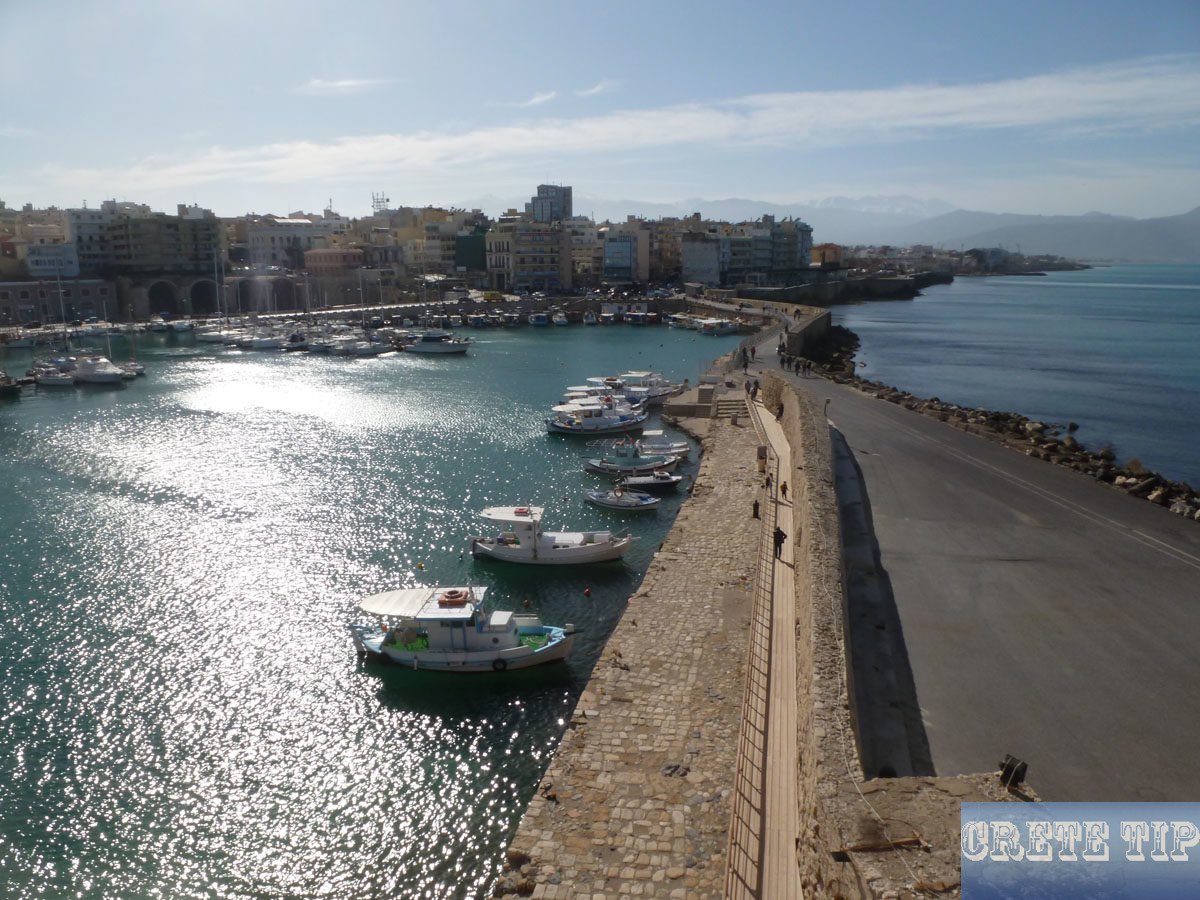
Heraklion (Iraklion)
Heraklion – or Iraklion (after Heracles = Hercules) is the capital of Crete. Following the end of Second World War, Heraklion expanded at a fast tempo, primarily around 1950-1960, because of the touristic expansion of the area and whole Crete. So, many hotels in Heraklion have been established alongside tourist facilities and museums. It is a modern-day city, industrial and commercial along with the agricultural heart of the central and eastern island.
In front of the city is the island of Dia located, to which sailing trips are available.
Sightseeing tour of Heraklion
The guest to the Heraklion might begin from Eleftherias Square, the location where the Archeological Museum is at the start of Xanthoudidou Street. Opposing are the office buildings of EOT (‘Greek National Tourist Organization’) followed by the Daidalou Street, which is stone-paved and having a huge variety of shops, bars and restaurants and which ends up within Venizelou Square, called the ‘Square of the Lions’, due to the prominent Venetian water fountain which was created by Morosini in 1628. It has four lions with water streaming from their mouths into 8 basins and is furnished along with relief depictions from Greek mythology.
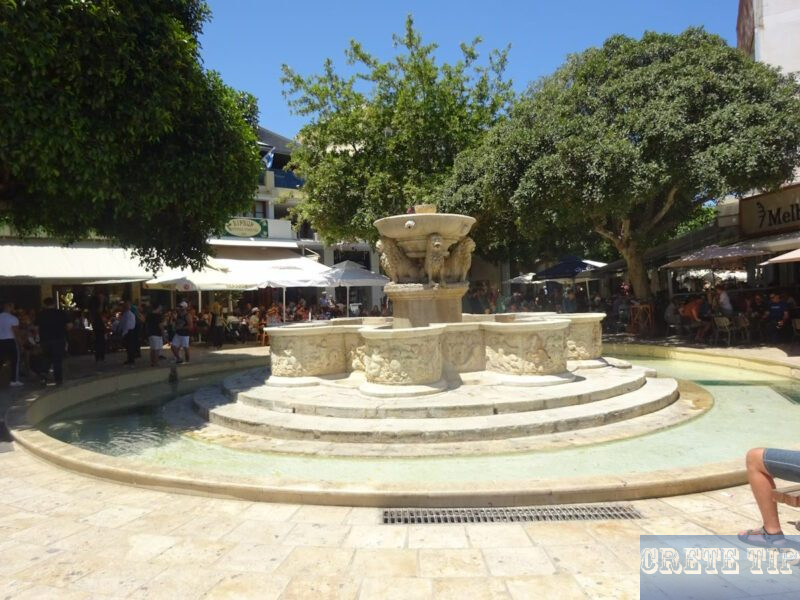
The square had been the middle of Heraklion throughout the Venetian period comprising social complexes and the Ducal Palace, which has not overcome the times. East of the square is the basilica of Saint Mark, patron saint of the Venetians, built in 1239. The Turks transformed it into a mosque. These days, it has been remodeled and is utilized as an exhibition area for social happenings.
North of the square is El Greco Park and the tiny Kallergon Square.
At the beginniung of 25th Avgoustou Street, on its right-hand place, is the Loggia, the most amazing monument from the Venetian period, designed by Francisco Morosini in 1625-1628. The Loggia is a rectangle, two-storey building created from permeable rocks along with friezes around the higher section of the first floor and triglyphs and metopes. It had been the center of community life, a location where the nobles recovered and relaxed. It was in the past the residence of the Mayor’s office.
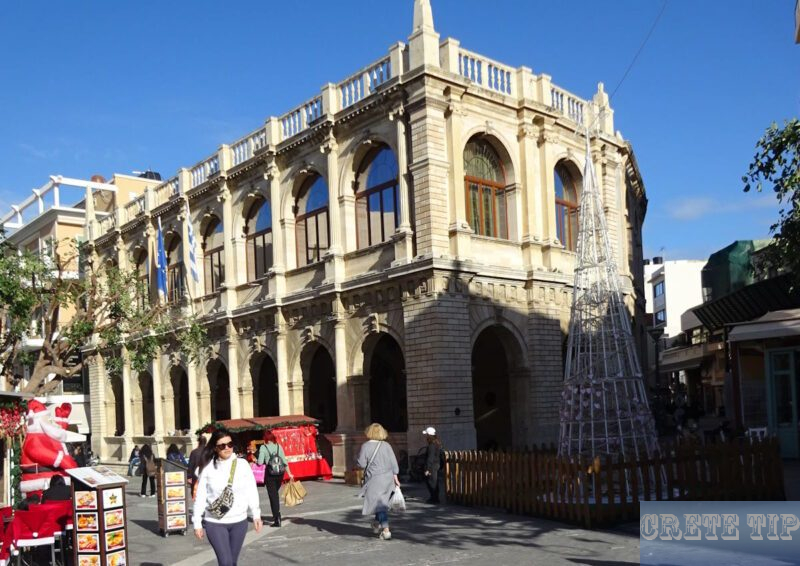
Straight east of the Loggia, on a stone made square, is the church of the patron saint of the Heraklion, the Apostle Titus. It isn’t recognized when the church had been constructed. The single fact confident is that it remained throughout the 2nd Byzantine period in the event the seat of the bishop of Crete was moved there coming from Gortys, which had been demolished. Additionally, it is unknown exactly what the authentic style of the church was since it had been severely destroyed by an earthquake in 1508 and by a fire in 1544 and it was re-built from the fundamentals up, having a variety of modifications, in 1557.
Throughout the Venetian period it had been the chair of the Roman Catholic archbishop and throughout the Turkish control it was transformed into a mosque. It sustained considerable destruction within the earthquake of 1856 and was reconstructed in 1872. The church contains by far the most holy gifts of the Crete and also the head of Saint Titus.
Every year on August 25, a large procession is held from the church to celebrate Saint Titus Day.
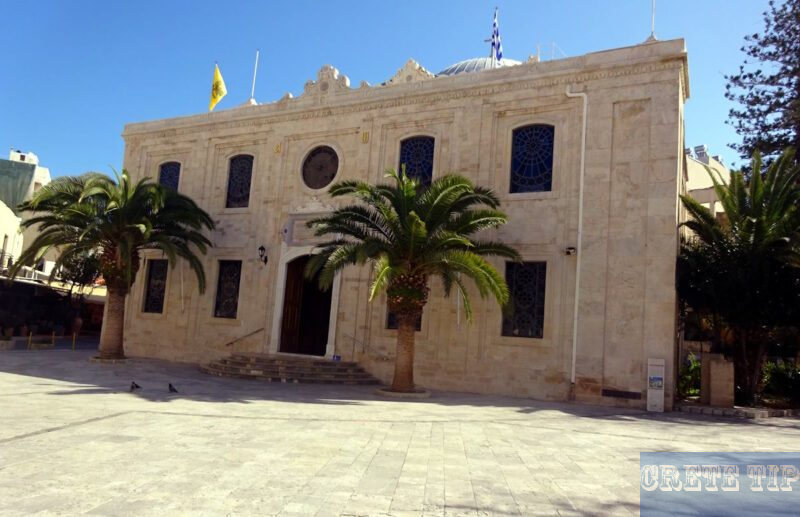
25th Avgoustou Street connects to the middle of Heraklion towards the old Venetian harbor as well as the coastline roads of Kountourioti and Sophokli Venizelou which lead to the eastern and western areas of the city.
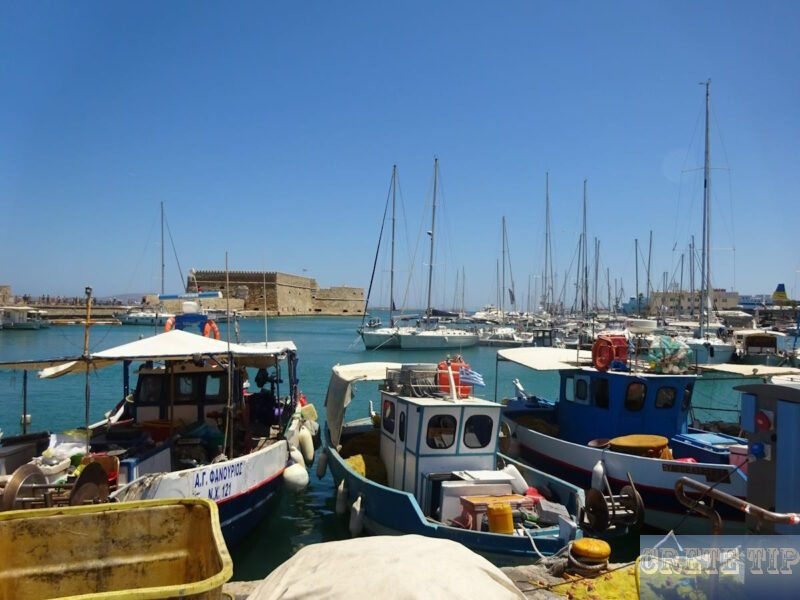
Venetian Harbor
In the front is the charming Venetian harbor filled with fishing boats, caiques and private crafts where the citadel of La Roca al Mare or Koules is behind, probably the most magnificent monuments on Crete. The original fort was small and it was demolished by an earthquake in 1303; the actual had been created starting in 1523 and is the one which exists nowadays. The citadel has solid walls, and twenty-six all-purpose storage compartments. A ramp ends up in the top section which has been changed into an outdoor theater.
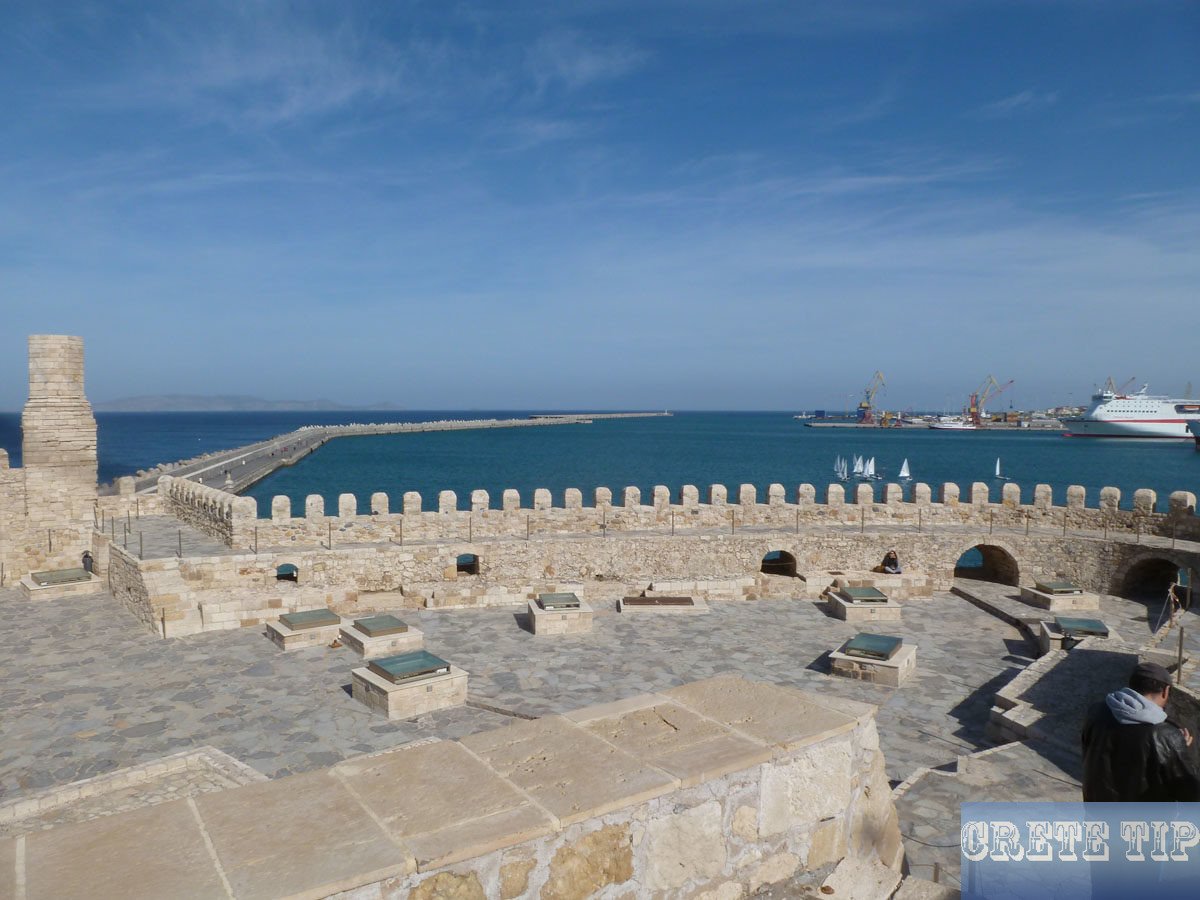
Opposed to Koules within the western section of the harbor, are the dock yards where the Venetian vessels had been assembled or serviced. East of the little harbor is the large, industrial and commercial harbor.
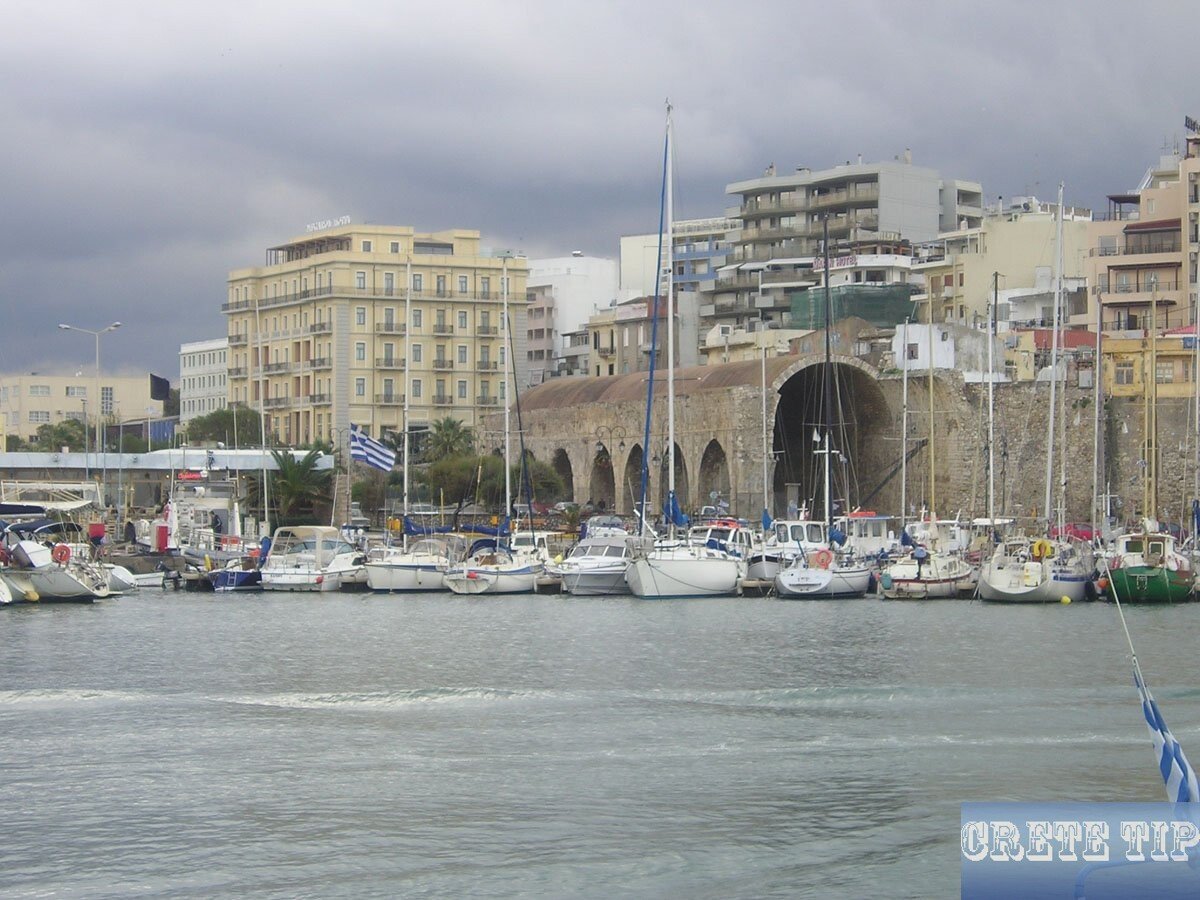
Market and shopping street
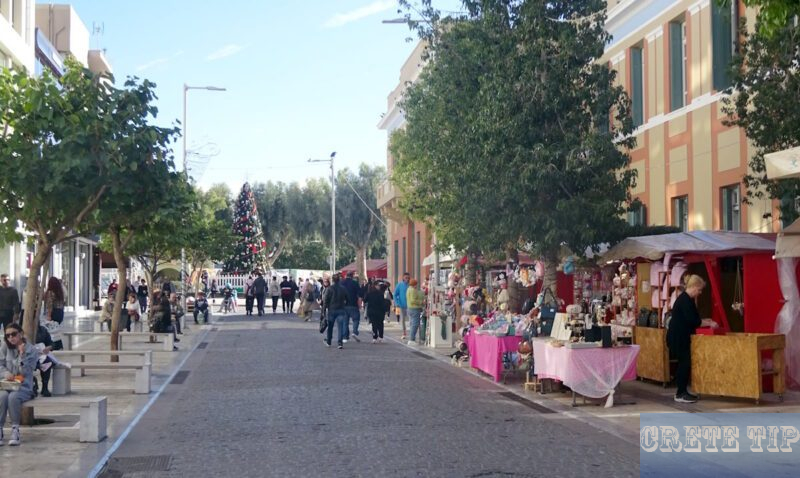
Dikaiosynis Avenue begins from Eleftherias sq. It is the most important road inside the classic city. On the left side are the former Venetian barracks, constructed in the 16th century, that have been renovated by the Turks in 1883. The Nomarchy (Prefecture Offices), the Courts, the Police and the Tourist Police also have their offices there.

After these buildings, the road turns right to Eleftheriou Venizelou Square and right again to 1866 Street, where the Heraklion market is located. Throughout the day, the street is filled with customers from Heraklion’s largest market, which is one of the few remnants that gives visitors a glimpse of the city’s long history. There is a wide variety of fruit and vegetables, as well as meat products from butchers and fishermen, and numerous offerings of herbs, spices, cheese, yogurt, leather and plastic goods, CDs, shabby souvenirs, and a huge selection of cheap kitchen utensils, pocket knives, and all sorts of other items.
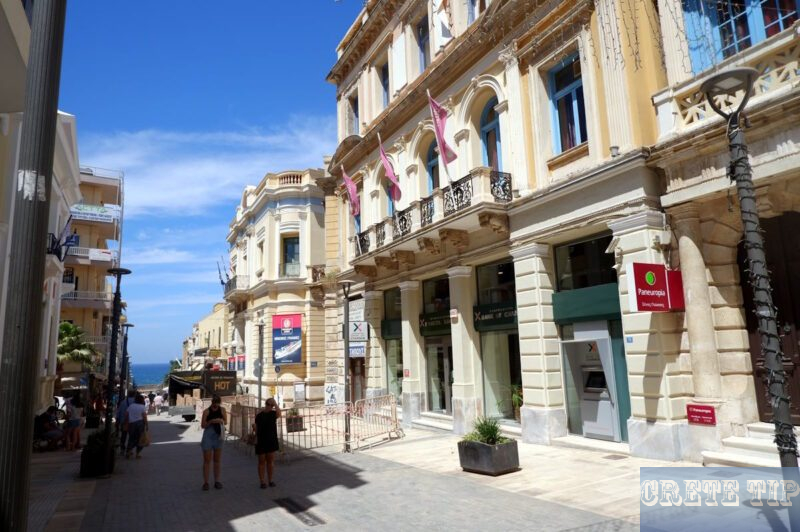
Kalokairinou Street, an extension of Dikaiosynis Street, is perhaps the largest and best shopping street in Heraklion. During Venetian rule, it was called Strata Square and ends at the Pantokrator (or Chanion) Gate.
Another interesting sightseeing tour starts at Eleftherias Square and continues along Averof Street. It is a shopping street with many shops and leads to Kornarou Square.
Old City walls
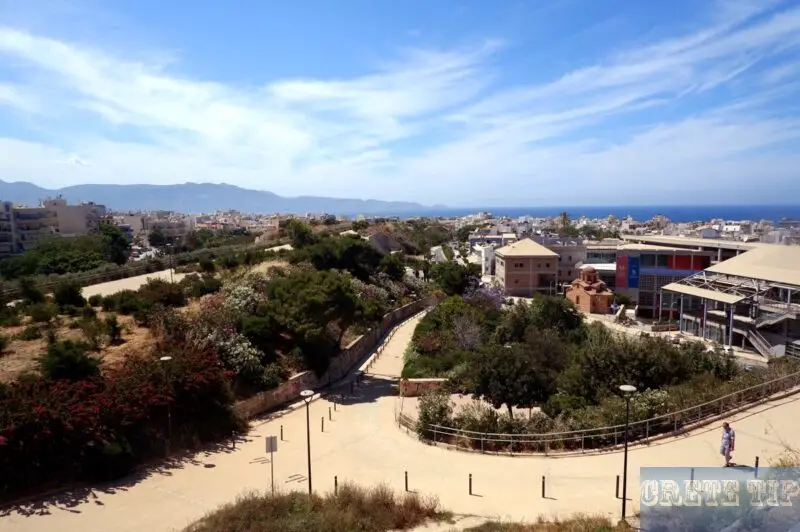
Following these complexes the road proceeds right to Eleftheriou Venizelou Square and right to 1866 Street, the location where the marketplace of Heraklion is actually. Kalokairinou Street, an extension of Dikaiosynis Street, is probably the best business oriented road in Heraklion. Throughout the Venetian times it had been known as Strata Sq. and ends up within the Pantocrator, or Chanion, Gate.
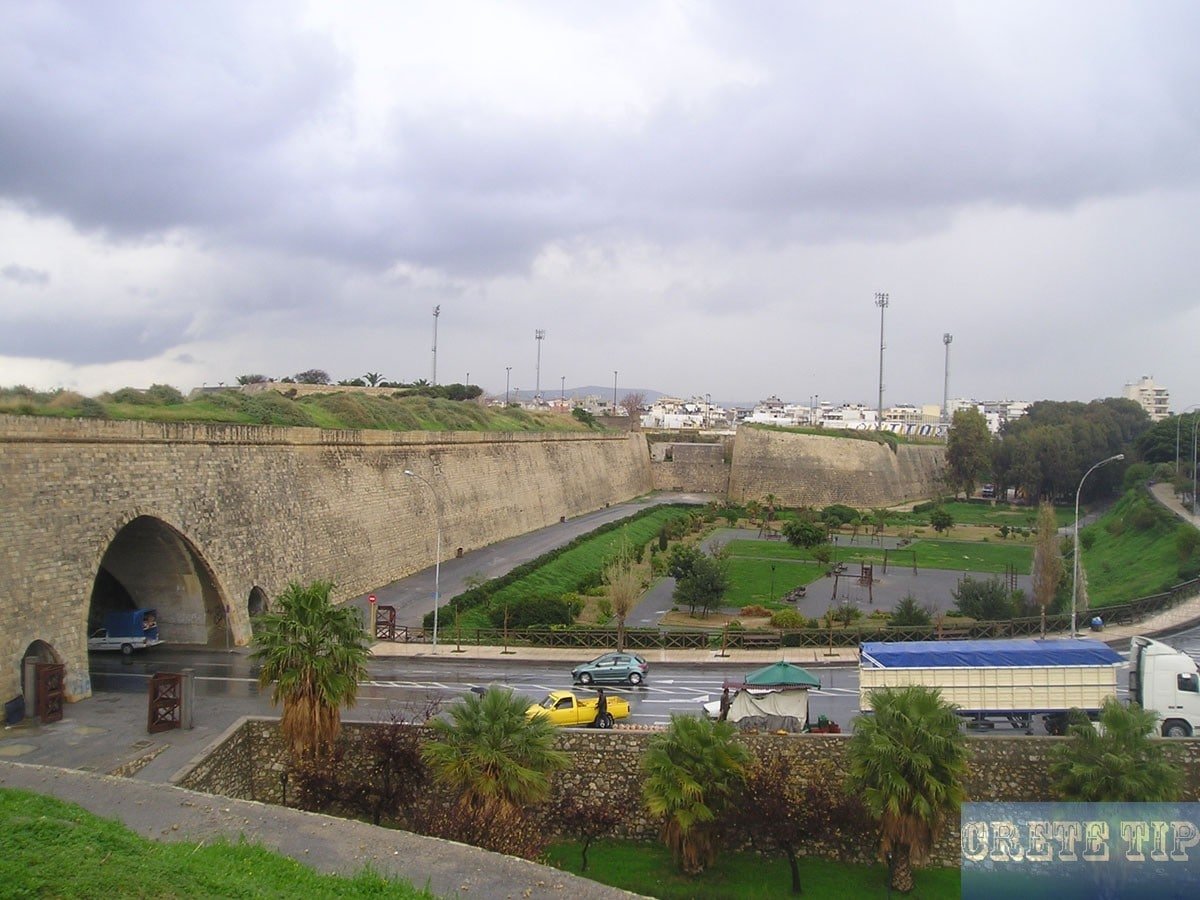
One additional fascinating excursion starts at Elefhteria Square, by way of Averof Street. It is a business road with lots of stores and ends up in Kornarou Square. At the outset of the square is Evans Street, which is pointed to south toward the walls of the Heraklion along with the Kainouryia Porta (‘New Gate’) or Pyli tou lesou (‘Jesus Gate’) as the Venetians named it. Right hand, before the Kainouryia gate, is Plastira Street and further west the Martinengo Bastion in which the grave of Nikos Kazantzakis is.
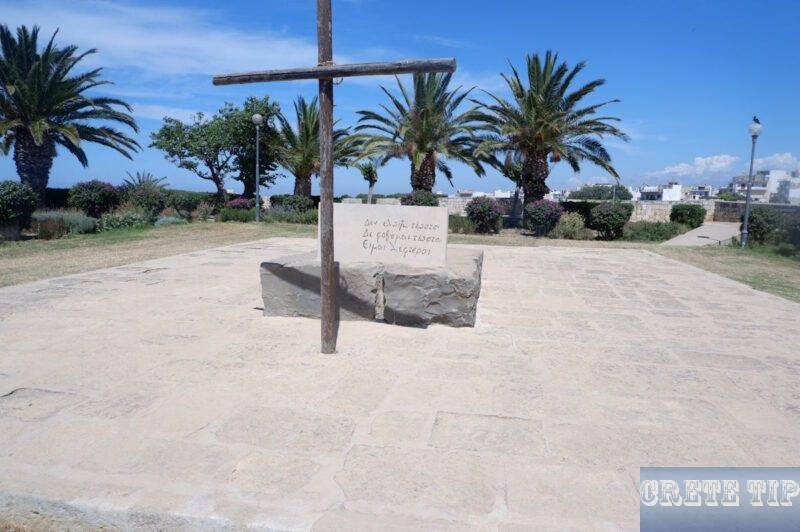
Tomb of Nikos Kazantzakis on the Martinengo Bastion of the city walls.
You can walk around almost the entire preserved and impressive city wall on the land side of Heraklion and pass through the elaborate city gates Porta Hanion at the lowest point of Kalokerinou or Porta Kenouria at the tip of Odgos Evans and admire them from the front.
Both gates date back to the second half of the sixteenth century, and most of the city’s preserved defensive structures also date from this period. At Porta Kenouria, the walls are more than 40 meters thick.
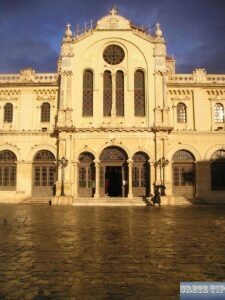
To the west of the Square, Ayios Minas street connects to Kalokairinou Street. There is the grand cathedral of Ayios Minas on this road and next to it the tiny, old church of Ayios Minas while on the side of the square is the Church of Ayia Aikaterini of Sinai.
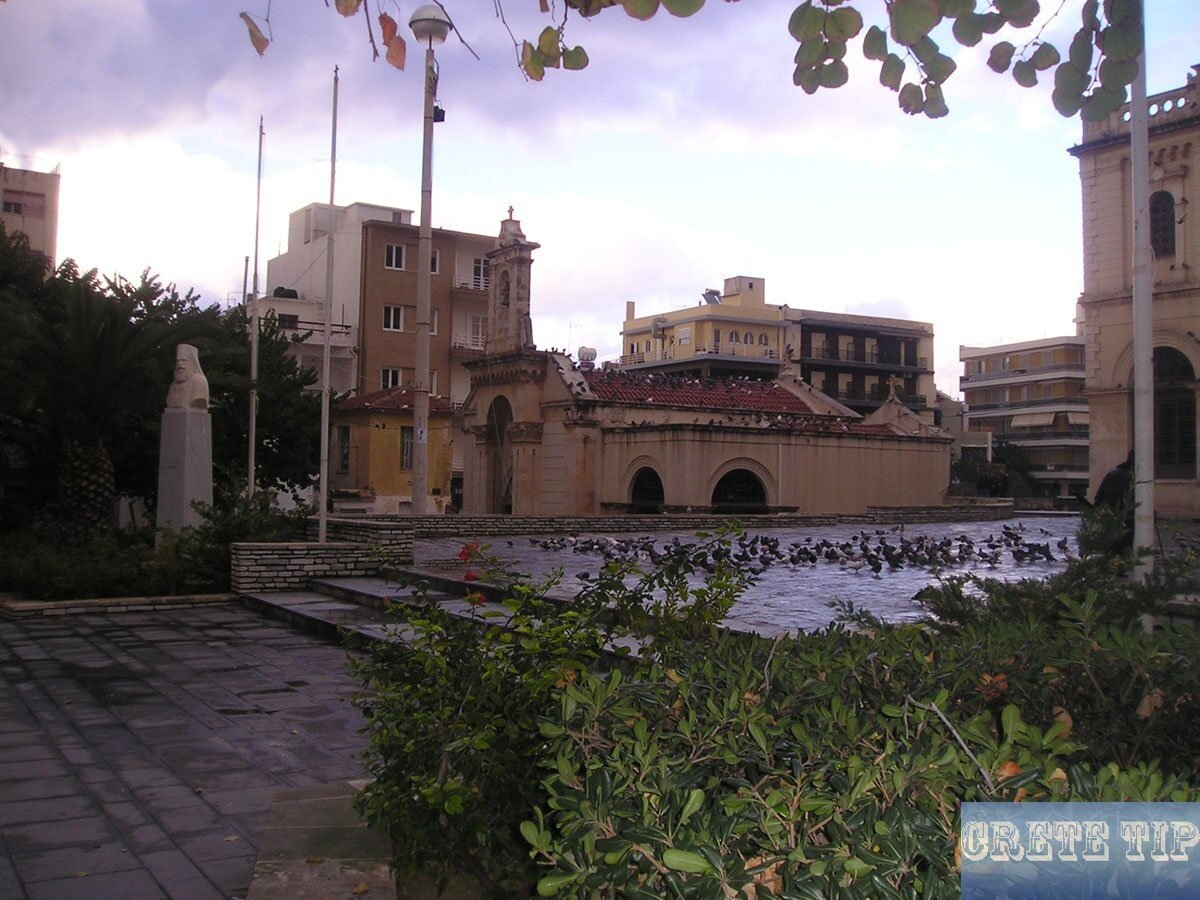
More pictures from Heraklion
Museums in Heraklion
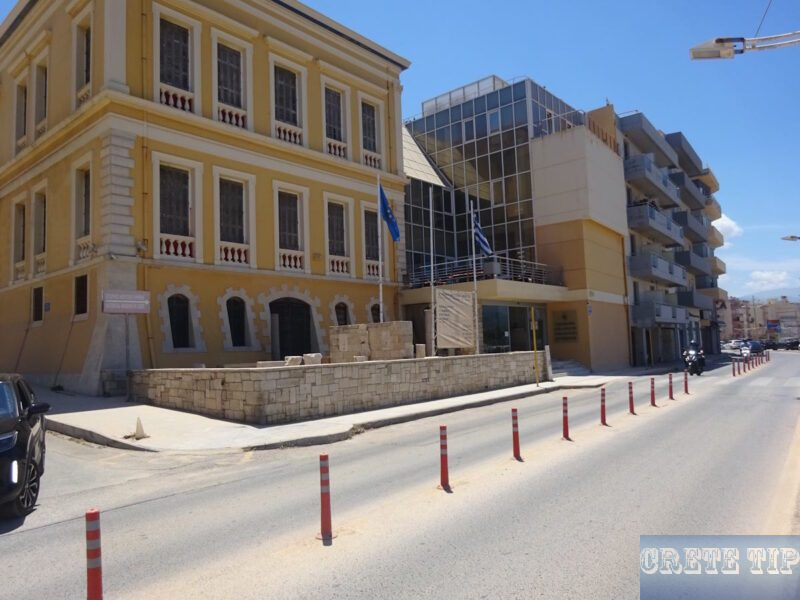
The Historical Museum of Crete is one of the city’s most active exhibition venues and is located at 27 Sofokli Venizelou Street.
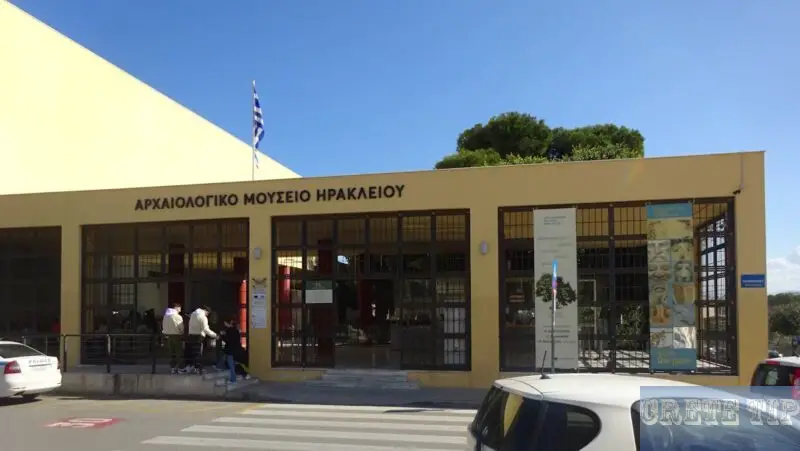
The Archeological Museum is one of the city’s main attractions, with numerous finds from Knossos. It is located at 2 Xanthoudhidhou Street, with the entrance on the Hatzidhaki side.
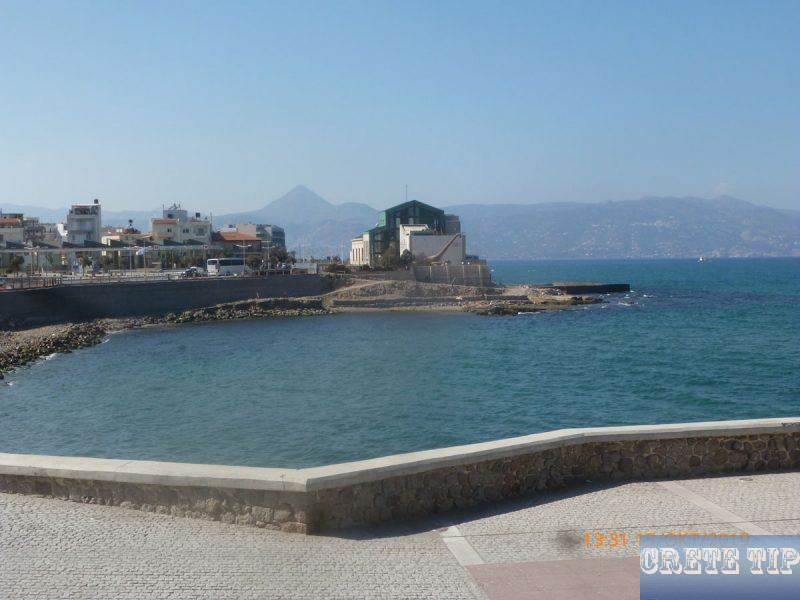
The Natural History Museum of Crete is spectacularly located in a converted power station on Dermatas Bay (Sofokli Venizelou Street) and focuses on the ecosystem of the eastern Mediterranean and Crete’s geological development. There is an entertaining, interactive area and dinosaurs for children on the ground floor, as well as an earthquake simulator and a planetarium.
Hotels in and around Heraklion

Search Heraklion Hotels with Booking.com
Airport

The airport of Heraklion is called ‘Nikos Kazantzakis’. The current arrival times for flights and the departure times are here.
Video about Heraklion
Video about the views of Heraklion from the city walls, from the Venetian harbor with the citadel and from the long mole out over the modern port.


